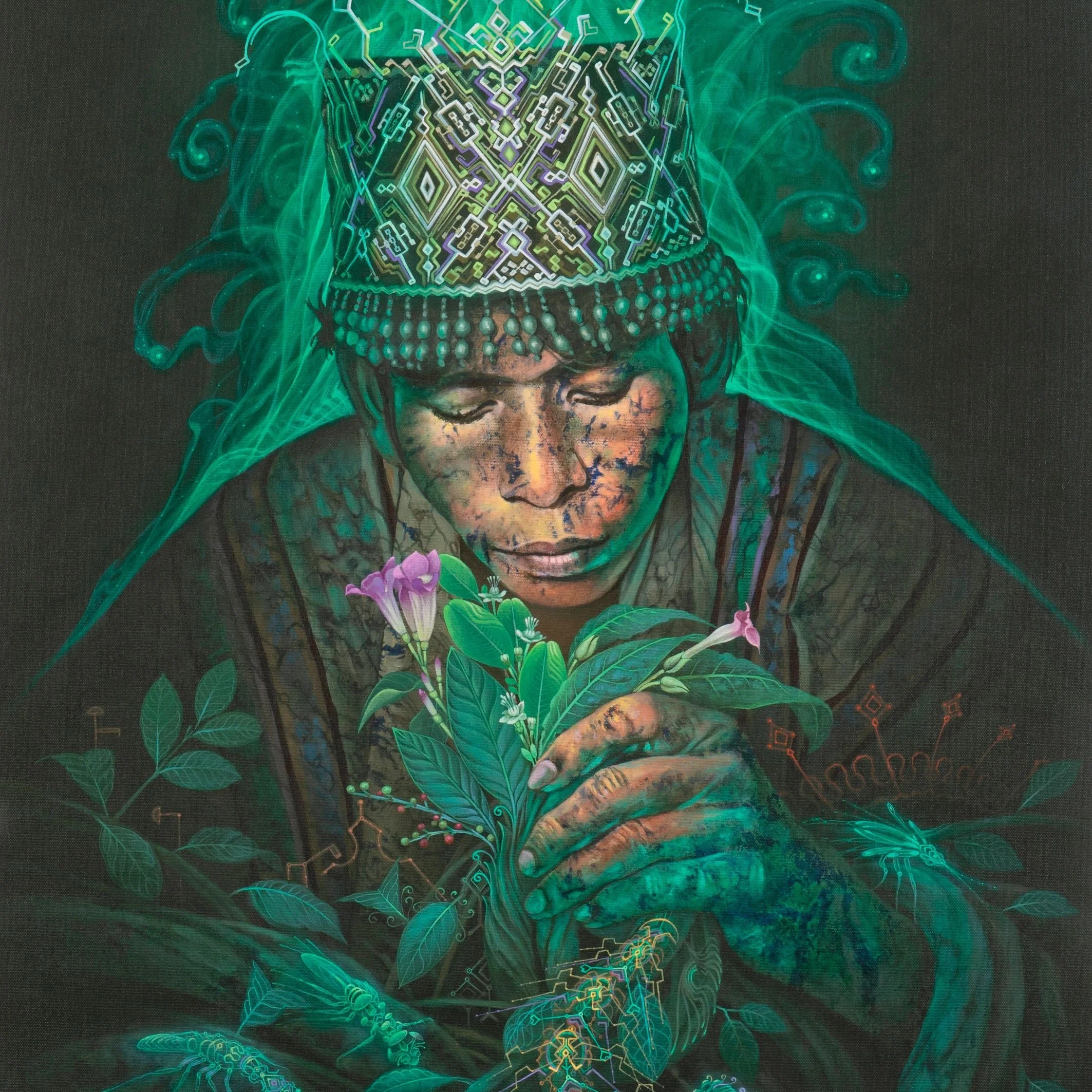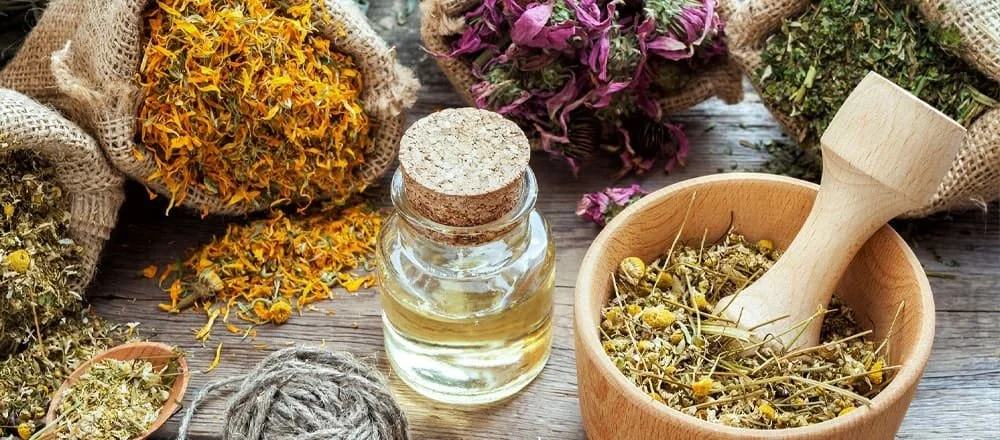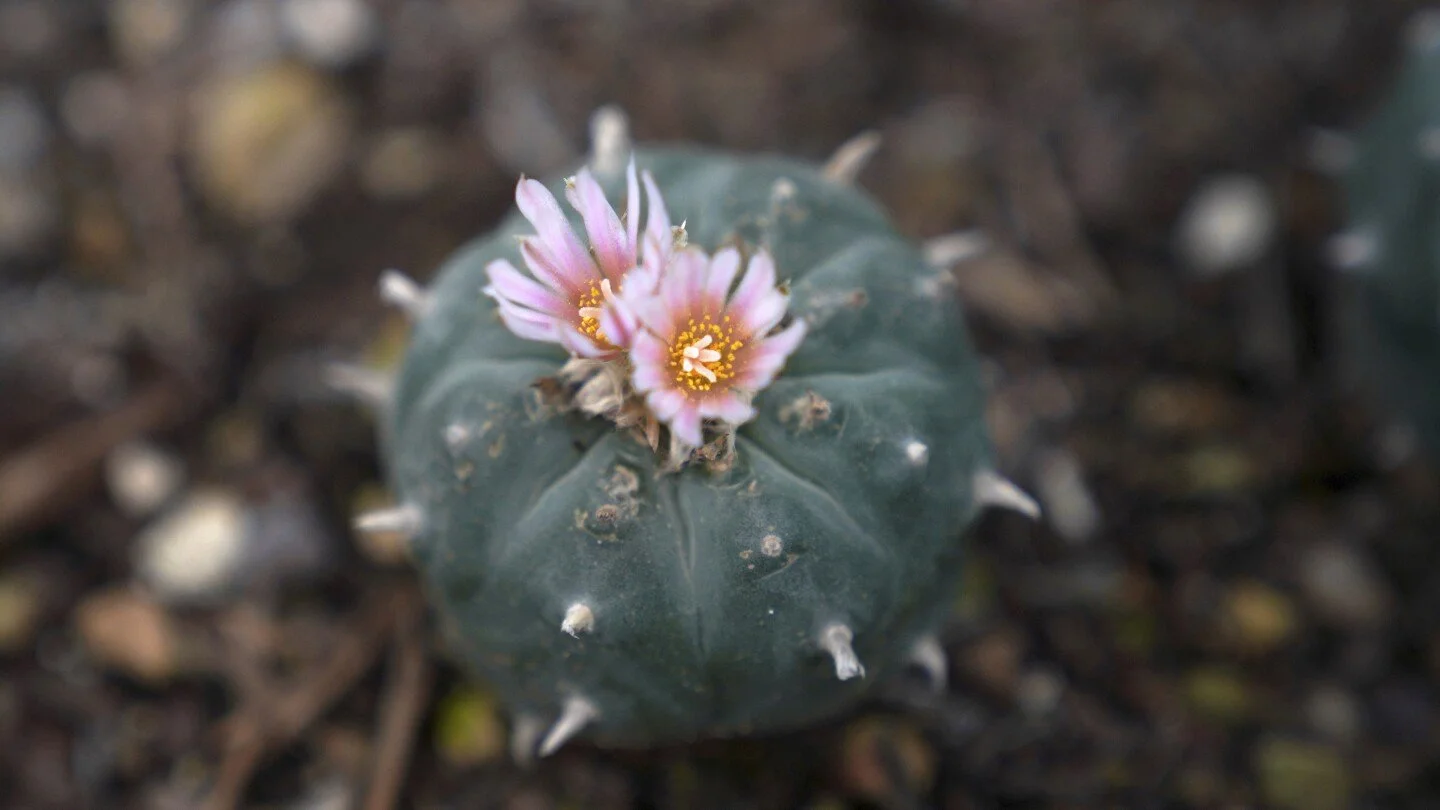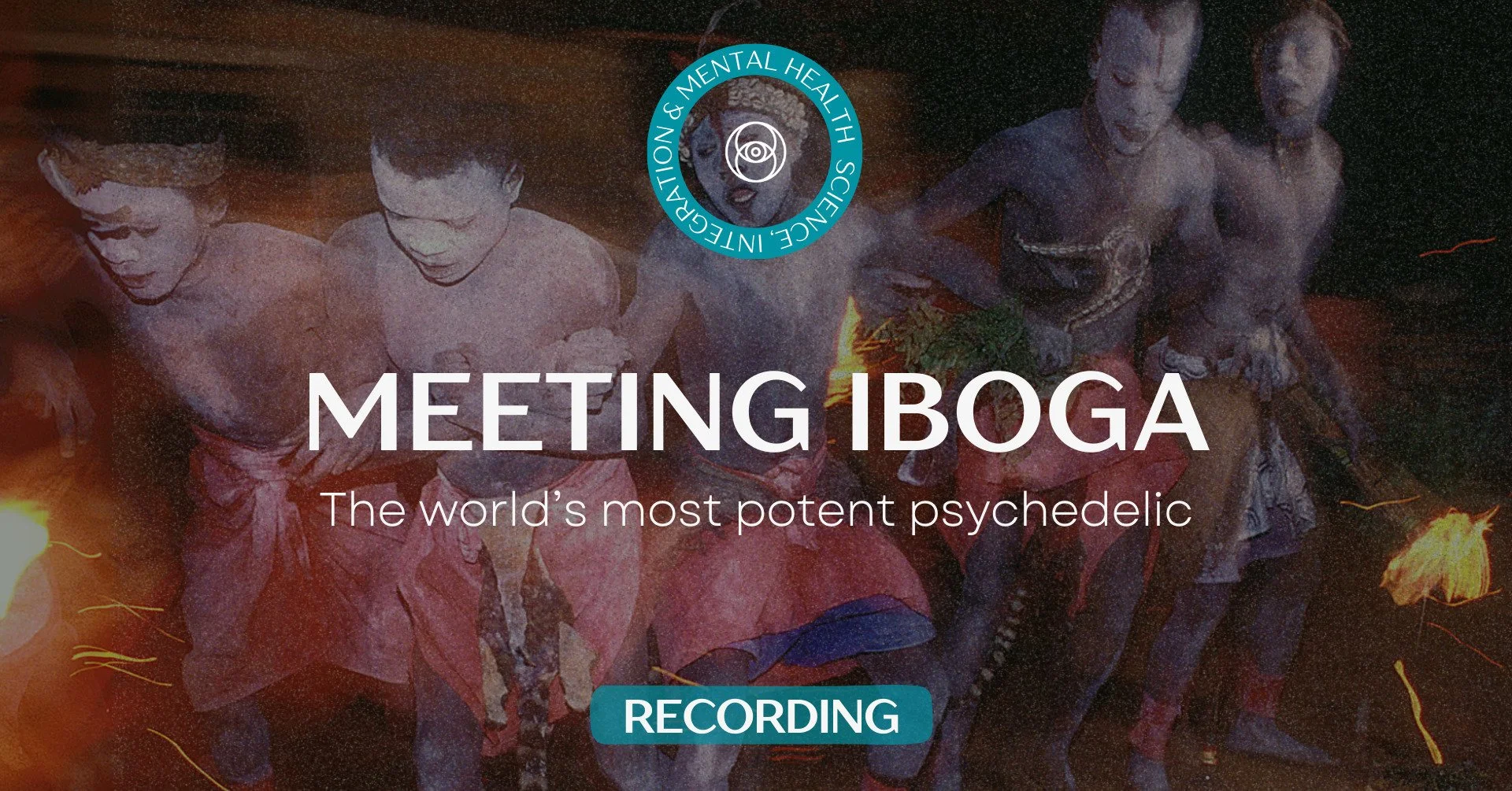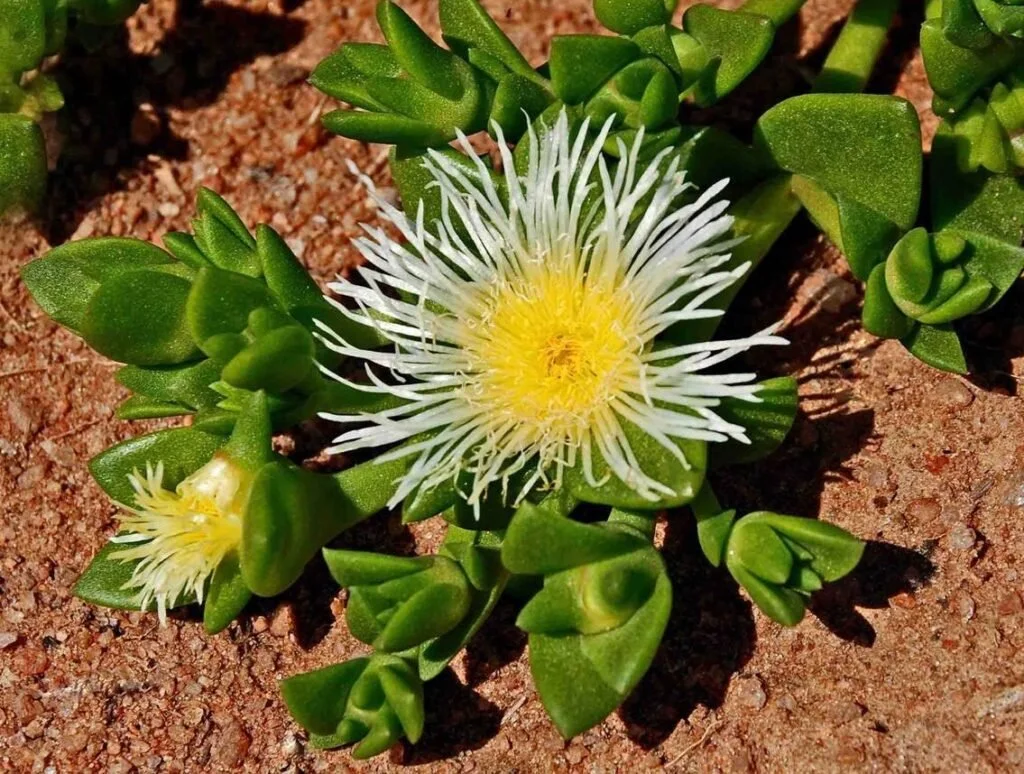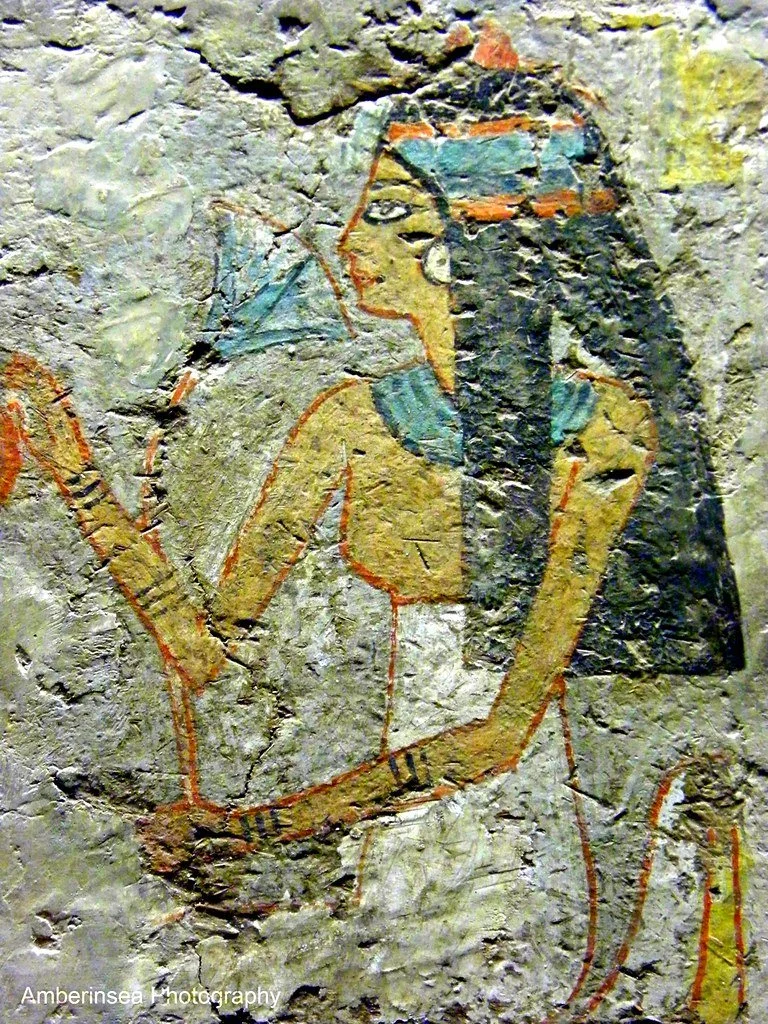Ancient Wisdom: 15 Sacred Plants From Around the World
Exploring the profound relationships between humanity and our botanical allies.. we take a look at the role of plants as guides and some of the greatest teachers from around the world. For more in-depth information on psychoactive plants and their properties and dosing recommendations, visit our harm reduction pages.
That chamomile tea you're sipping? You're participating in a sacred relationship that spans millennia. Every cup connects you to countless generations who recognised this humble flower as far more than a bedtime remedy - they knew it as a teacher, healer, and spiritual ally.
For thousands of years, humans have turned to plants for guidance that extends far beyond physical healing. Whilst ayahuasca and psilocybin mushrooms capture headlines, the plant kingdom offers an extraordinary spectrum of conscious allies—from the gentle companions in British gardens to the profound teachers of ancient traditions. Each possesses distinct wisdom, unique gifts, and specific ways of facilitating healing and expanded consciousness.
Plant Consciousness: When Nature Speaks
Plants communicate. This isn't metaphor - it's the foundational understanding of indigenous cultures worldwide and an emerging reality in modern botanical science. Sacred plants distinguish themselves not merely through biochemistry, but through their capacity to teach, heal, and guide on multiple levels simultaneously.
The Shipibo people of the Peruvian Amazon have developed perhaps the most sophisticated framework for understanding plant consciousness. In their cosmology, each plant functions as a specialised doctor with distinct intelligence, healing methods, and teaching songs called icaros. These aren't passive chemical compounds - they're active participants in healing with intention and awareness.
When Shipibo healers want to learn from a plant, they do a dieta working with it exclusively for weeks or months, following strict protocols until they can hear the plant's song and understand its healing wisdom. The geometric patterns adorning Shipibo textiles are visual representations of these plant songs - living maps of botanical consciousness readable by those who understand the language.
This understanding extends globally. Celtic druids recognised tree consciousness. Hindu traditions honour plant sentience. Australian Aboriginal peoples maintain relationships with hundreds of conscious plant allies. Modern research reveals the complex communication networks plants maintain through chemical signals and root connections.
The shift from exploitation to partnership changes everything. Instead of taking from plants, we learn to receive from them. Healing emerges not just from chemical constituents, but from conscious botanical intention to support human evolution.
Britain's Sacred Allies: Power in the Hedgerows
We’re exploring sacred plants around the world, but let’s start with home!
Rose - Master of Heart Healing
Every culture that encounters roses recognises their profound heart-healing properties, both physical and emotional. Rose petals contain genuine therapeutic compounds for inflammation and emotional balance, yet their deeper wisdom lies in teaching love through vulnerability - the courage to remain open despite life's inevitable wounds.
British folk traditions employed roses in protection spells and healing ceremonies, whilst rose water cleansed sacred spaces and anointed ceremony participants. Beauty and strength coexist in this plant, demonstrating how tenderness and resilience function as partners rather than opposites.
Chamomile - The Peace Teacher
Anglo-Saxon healers placed chamomile amongst nine sacred herbs (Camomile (Matricaria chamomilla), Nettle (Urtica dioica), Fennel (Foeniculum vulgare), Crab Apple (Malus sylvestris), Mugwort (Artemisia vulgaris), and Plantain (Plantago major). This unassuming daisy-like flower offers more than its scientifically-confirmed anxiety-reducing properties restoring both physical and emotional equilibrium.
Scattered around sacred spaces or burnt as purifying incense, chamomile's gentle wisdom makes it an ideal ally for those beginning to explore plant consciousness.
Elder - Guardian of Thresholds
Pre-Christian Britain revered elder trees as gateways between worlds, dwelling places for protective spirits. Traditional protocol demanded asking permission before harvesting—wisdom that modern foragers increasingly embrace.
Folklore describes elder groves as communication points with otherworldly beings - liminal spaces where ordinary reality grew thin.
Hawthorn - The Boundary Master
Celtic Britain recognised hawthorn as one of the most magically potent trees, understanding what modern herbalists confirm—this species masters both physical and emotional heart healing. Whilst its cardiovascular benefits are scientifically established, hawthorn's profound teaching centres on healthy boundaries.
Fierce thorns protect tender blossoms and sweet berries, illustrating that protection and openness function as allies, not adversaries. Sacred wells and healing springs traditionally received hawthorn guardians, the trees serving as keepers of threshold spaces.
Tobacco
Nicotiana tabacum and related species
Join us next week for a deep dive into this plant: https://dandelion.events/e/l674i
Tobacco's story represents the most tragic transformation in plant medicine history. Before becoming a public health villain, tobacco held the highest position amongst sacred plants throughout the Americas—known as "grandfather medicine" and master of all plant teachers.
Indigenous traditions never used tobacco recreationally. It served as direct communication with the divine: ceremonial offerings to spirits, prayer medium, and powerful healing tool.
Shamans used tobacco smoke for energetic diagnosis, vision induction, and honouring the four directions. Traditional varieties like Amazonian mapacho remain pure, containing the full alkaloid spectrum that creates sacred rather than addictive effects.
Tobacco's commercialisation exemplifies how sacred plants become corrupted when stripped of spiritual context and industrially processed. Understanding this distinction proves crucial for all plant medicine work - the difference between sacred communion and exploitation determines whether plants heal or harm.
Cannabis
Cannabis sativa and Cannabis indica
Cannabis holds one of the longest documented relationships with humanity, with evidence of its sacred use spanning over 5,000 years. From ancient China and India to early Christian and Islamic traditions, cannabis has been revered as a powerful healing ally and spiritual teacher.
In Hinduism, cannabis is associated with Lord Shiva and is consumed during religious festivals as a sacrament. The plant appears in the Atharva Veda as one of the five sacred plants, where it's described as a source of happiness and liberation. Traditional Ayurvedic medicine recognizes cannabis as having profound healing properties for both body and mind.
The plant's psychoactive compounds, particularly THC and CBD, interact with the human endocannabinoid system—a network that regulates everything from mood and memory to pain and inflammation. This biological relationship suggests a deep evolutionary connection between humans and cannabis.
In ceremonial contexts, cannabis has been used to facilitate meditation, enhance spiritual practices, and promote healing. Many traditions recognise the plant's ability to quiet mental chatter, open the heart, and facilitate deeper states of consciousness. When approached with intention and reverence, cannabis can serve as a powerful ally for introspection, creativity, and healing.
Modern research is validating many traditional uses, showing cannabis's efficacy for conditions ranging from epilepsy and chronic pain to PTSD and anxiety. As legalisation spreads, there's a growing movement to reclaim cannabis's sacred nature and move beyond both prohibition and commercialization toward a middle path of respectful use.
Salvia Divinorum: The Divine Sage
Native to the cloud forests of Oaxaca, Mexico, Salvia divinorum has been used by Mazatec shamans for divination and healing for centuries. Known as "the plant of the Virgin Mary" or "divine sage," salvia produces intense but short-lived altered states of consciousness that can feel like entering entirely different realities.
The Mazatec tradition involves consuming salvia in a ceremonial context, often in combination with other sacred plants. Shamans use it to journey into non-ordinary reality to diagnose illness, communicate with spirits, and gain insight into the causes of suffering. The plant is considered particularly helpful for understanding psychological and spiritual ailments.
Salvia's active compound, salvinorin A, is unique among naturally occurring psychedelics as it acts on the kappa-opioid receptor system rather than serotonin receptors. This creates experiences that are often described as more intense and alien than other psychedelics, involving radical alterations in perception, identity, and reality.
The plant teaches through direct experience rather than visual hallucinations, often showing users alternative perspectives on reality, consciousness, and identity. Many report encounters with plant intelligence or geometric entities, profound insights into the nature of existence, or healing visions related to personal trauma.
Peyote and San Pedro: The Sacred Cacti
Lophophora williamsii (Peyote) and Trichocereus pachanoi (San Pedro)
The sacred cacti of the Americas contain mescaline, a powerful psychedelic compound that has been used ceremonially for over 5,000 years. These plants are revered as some of the most important teachers in indigenous traditions across Mexico and South America.
Peyote holds central importance in the Native American Church, where it's considered a sacrament that connects practitioners with the divine. The cactus is seen as a living deity that provides healing, guidance, and spiritual insight. Ceremonies involve consuming peyote in a structured ritual context with prayer, music, and community support.
San Pedro, known as Huachuma in Peru, has been sacred to Andean cultures for millennia. The cactus is considered a teacher plant that opens the heart and connects users with the spirit of the mountains and the wisdom of the ancestors. Traditional ceremonies often take place in sacred sites and involve a full night of prayer, music, and healing work.
Both cacti are known for their gentle, heart-opening effects that promote healing, self-reflection, and spiritual insight. The mescaline experience is often described as more grounded and earth-connected than other psychedelics, with less visual distortion but profound emotional and spiritual healing.
Iboga: The Tree of Life
Tabernanthe iboga
Deep in the rainforests of Central Africa, the Bwiti people of Gabon have worked with iboga root bark for over a thousand years. Known as "the tree of life," iboga contains ibogaine, a powerful alkaloid that creates profound introspective experiences lasting 12-36 hours. Unlike other psychedelics, iboga doesn't typically produce vivid visual hallucinations but instead facilitates deep psychological exploration and life review.
In Bwiti tradition, iboga is central to initiation ceremonies that mark the transition from adolescence to adulthood. These rituals involve consuming large amounts of iboga root bark while community members provide support through music, dance, and guidance. Participants often report encountering deceased ancestors, receiving life guidance, and experiencing profound spiritual revelations.
The plant has gained attention in addiction treatment, with many reporting that a single iboga experience can interrupt drug dependencies by resetting neural pathways and providing psychological insights into the roots of addictive behavior. However, iboga requires careful medical supervision due to its effects on the cardiovascular system and potential interactions with other substances.
Watch the recording of our introduction to iboga: https://dandelion.events/e/o4f9z
Kanna: The Heart Opener
Sceletium tortuosum
For over 1,000 years, the Khoikhoi and San peoples of South Africa have used kanna as a sacred medicine for emotional healing and spiritual connection. This succulent plant contains mesembrine and related alkaloids that act as natural serotonin reuptake inhibitors, creating mood enhancement and emotional opening without strong hallucinogenic effects.
Traditionally, kanna was chewed, smoked, or prepared as a tea for ceremonies, vision quests, and healing work. The plant was considered so valuable that it was used as currency in trade relationships. Hunters would use kanna to enhance focus and endurance, while healers employed it to facilitate emotional release and spiritual insight.
Modern research has validated many traditional uses, showing kanna's potential for treating anxiety, depression, and PTSD. The plant creates a gentle, heart-opening experience that many describe as increased empathy, emotional clarity, and a sense of connection with others and nature.
Blue Lotus: The Sacred Lily of the Nile
Nymphaea caerulea
Ancient Egyptians revered blue lotus as a sacred flower associated with rebirth, the sun god Ra, and the afterlife. Archaeological evidence shows blue lotus prominently featured in tomb paintings, religious ceremonies, and burial goods spanning over 3,000 years. The flower contains nuciferine and aporphine, compounds that create mild psychoactive effects including relaxation, enhanced dreams, and meditative states.
Egyptians prepared blue lotus by steeping the flowers in wine, smoking the petals, or creating perfumed oils for ceremonial use. The plant was believed to facilitate communication with the divine, enhance dream work, and support the soul's journey after death.
Modern practitioners use blue lotus for dream enhancement, meditation, and as a gentle relaxation aid. The flower is often combined with other herbs or consumed as tea before sleep to promote vivid, meaningful dreams and facilitate lucid dreaming practices.
Kava: The Sacred Root of the Pacific
Piper methysticum
For over 3,000 years, Pacific Islander cultures have used kava as a sacred ceremonial plant for social bonding, conflict resolution, and spiritual practices. The root contains kavalactones that create a unique state of relaxed sociability, reduced anxiety, and mental clarity without impairment of cognitive function.
Drinking kava is like the Polynesian version of a peace pipe. You reportedly can't feel hate after drinking kava, so it's used to settle quarrels, begin treaty negotiations, and facilitate political meetings. The plant is considered sacred, with specific protocols governing its cultivation, preparation, and consumption.
Different varieties of kava produce varying effects, from the more stimulating "heady" varieties that enhance mental clarity to the more sedating "heavy" types that promote deep relaxation. Traditional preparation involves grinding or chewing the root and mixing it with water, though modern methods may use different extraction techniques.
Damiana: The Mayan Dream Herb
Turnera diffusa
Indigenous peoples of Central America, particularly the Maya, have used damiana for over 1,000 years as a sacred plant for enhancing dreams, promoting visions, and supporting reproductive health. The herb contains compounds that act as mild aphrodisiacs and nervous system tonics, creating subtle mood enhancement and increased sensitivity.
Traditional uses include smoking damiana leaves in ceremony, brewing them into tea for dream work, and combining the herb with other sacred plants to enhance their effects. Mayan shamans used damiana in love magic, fertility rituals, and ceremonies designed to strengthen the connection between partners or heal relationship trauma.
The plant was also valued for its ability to enhance dream recall and promote prophetic dreams. Many traditional practitioners would consume damiana tea before sleep to receive guidance from dreams or communicate with spirits and ancestors through the dream realm.
Calea Zacatechichi: The Dream Herb
Calea ternifolia
Known as "dream herb" or "bitter grass," Calea zacatechichi has been used by the Chontal people of Mexico for divination through dreams for centuries. This small shrub contains compounds that enhance dream vividness, improve dream recall, and facilitate lucid dreaming experiences.
Traditional preparation involves smoking the dried leaves or drinking a bitter tea made from the plant before sleep. Shamans and diviners would use Calea to receive answers to specific questions through dreams, diagnose illness, or gain insight into future events. The plant is considered a teacher that communicates primarily through the dream state rather than waking visions.
Modern dream workers and lucid dreaming enthusiasts have adopted Calea for enhancing dream practices, though the extremely bitter taste requires dedication to work with this plant ally. The herb is often combined with other dream-enhancing plants or practices to amplify its effects.
The Future of Sacred Plant Medicine
As Western society rediscovers the healing potential of sacred plants, we face important questions about how to honor indigenous wisdom while making these medicines accessible to those who need them. The medicalisation and commercialisation of plant medicines offers tremendous therapeutic potential but also risks repeating colonial patterns of extraction and exploitation.
The path forward requires genuine partnership with indigenous communities, sustainable cultivation practices, equitable access to benefits, and preservation of traditional knowledge. We must also develop new frameworks that honor both scientific rigor and indigenous wisdom, creating space for multiple ways of knowing and healing.
The relationship between humans and sacred plants represents one of our species' oldest and most important partnerships. By honoring these plant teachers and learning from them, we can rediscover ways of healing that address not just symptoms but the root causes of suffering.
May the journey lead us not just to personal transformation but also the guidance needed to heal our relationship with the living world itself…

